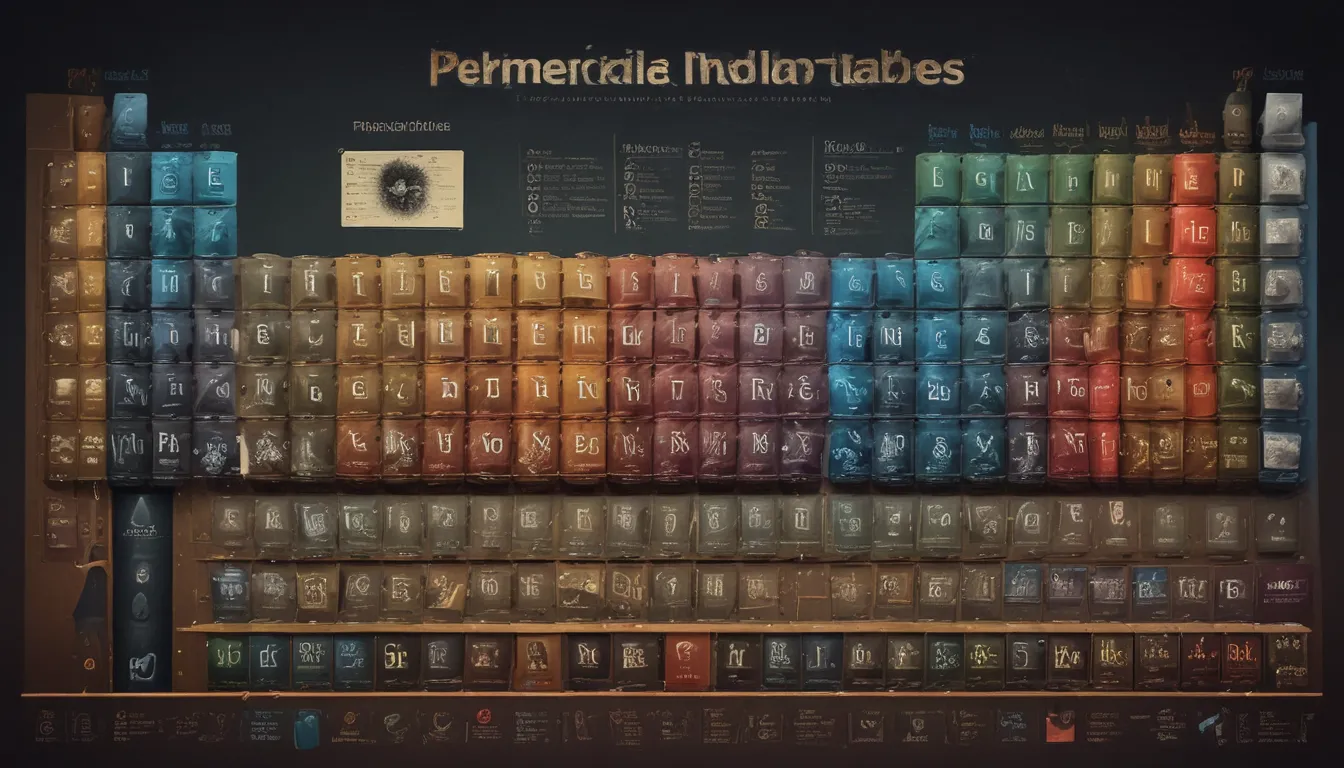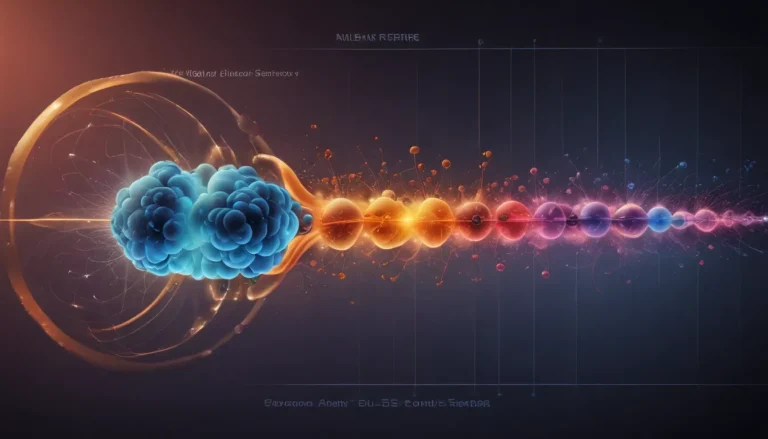A Note About Images: The images used in our articles are for illustration purposes only and may not exactly match the content. They are meant to engage readers, but the text should be relied upon for accurate information.
The periodic table, a cornerstone of chemistry, is more than just a chart of elements; it is a masterpiece that unravels the secrets of the chemical world. This organized arrangement of elements helps scientists predict their behavior and properties based on their location. In this article, we will delve into 15 captivating and lesser-known facts about the periodic table that will ignite your curiosity and appreciation for its complexity and beauty. From enigmatic element discoveries to mind-boggling number patterns, let’s embark on a journey through the intriguing world of chemistry and unravel the mysteries hidden within the periodic table.
The Periodic Table is a Masterpiece of Organization
The periodic table, with its periods and groups, provides a systematic framework that allows us to easily comprehend the patterns and trends exhibited by the elements. This organization helps scientists predict the behavior and properties of undiscovered elements based on their position in the table.
There are Currently 118 Elements
The periodic table consists of 118 unique elements, each distinguished by its atomic number and symbol. From hydrogen to oganesson, the heaviest known element, these elements showcase the diversity and complexity of the chemical world. Discovering new elements and fitting them into the existing framework is an ongoing pursuit in the field of chemistry.
Elements Have Unique Atomic Structures
Each element possesses its own distinct atomic structure, defined by the number of protons, neutrons, and electrons within its atoms. These subatomic particles dictate the chemical and physical properties of an element, leading to the varied characteristics observed across the periodic table.
The Periodic Table Reveals Periodic Trends
By examining the periodic table, we can uncover recurring patterns known as periodic trends. These trends, including atomic radius, ionization energy, and electronegativity, provide valuable insights into an element’s behavior and reactivity in chemical reactions. Understanding these trends empowers chemists to make predictions and discoveries in the realm of chemistry.
Hydrogen is a One-of-a-Kind Element
Hydrogen, with its unique characteristics, occupies a special place in the periodic table. Despite sharing qualities with both alkali metals and halogens, hydrogen does not strictly belong to either group. Its enigmatic nature adds an intriguing element to the overall composition of the periodic table.
The Periodic Table has a Noble Side
The noble gases, residing in Group 18 of the periodic table, are renowned for their low reactivity and stability. Helium, neon, argon, krypton, xenon, and radon make up this exclusive group that rarely forms compounds with other elements, showcasing their noble and dignified nature.
Scandium and Lanthanum Don’t Quite Fit
In a departure from convention, elements like scandium and lanthanum may be placed outside their designated periods to maintain coherence and integrity within the periodic table’s layout. This adjustment ensures continuity and clarity in the organization of elements.
The Periodic Table is Ever-Growing
The quest to discover new elements is an ongoing endeavor in the scientific community. Scientists continually strive to synthesize novel elements, expanding the boundaries of the periodic table. Recent additions like copernicium, nihonium, and oganesson have enriched our understanding of the chemical landscape.
Mendeleev’s Ingenious Prediction
Dmitri Mendeleev, the visionary Russian chemist, made remarkable predictions about the existence and properties of yet-to-be-discovered elements. By employing his ingenious Periodic Law, Mendeleev left gaps in the table for these elements, which were later validated with the discovery of technetium, gallium, germanium, and more.
Technetium is the First Artificially Created Element
Technetium holds the distinction of being the first element synthesized artificially in a laboratory. Its discovery validated Mendeleev’s confidence in his periodic table framework and paved the way for the creation and exploration of other synthetic elements.
Transition Metals Fill the Center Stage
Located in the heart of the periodic table, transition metals exhibit variable valence states and the ability to form colorful compounds. Elements like iron, copper, and gold, belonging to this group, play pivotal roles in various industrial applications, showcasing their versatility and significance.
The Periodic Table Connects Artists and Scientists
The beauty and structure of the periodic table have inspired artists to create captivating representations of its elements and organization. From museum exhibits to artistic designs on clothing, the periodic table serves as a bridge between science and art, captivating audiences with its aesthetic and scientific appeal.
Isotopes Add Complexity to the Elements
Many elements in the periodic table have multiple isotopes, differing in the number of neutrons within their atomic nuclei. These isotopes exhibit distinct physical properties and find applications in various fields, including medical imaging and nuclear power generation.
The “Periodic Law” Guides Element Arrangement
The Periodic Law, a fundamental principle in chemistry, dictates that the properties of elements repeat periodically based on their atomic numbers. This law not only underpins the layout of the periodic table but also elucidates the relationships and patterns among different elements.
The Periodic Table Continues to Evolve
The periodic table is a dynamic entity that evolves with scientific advancements and discoveries. As our knowledge of existing elements deepens and new elements are uncovered, the periodic table undergoes revisions and updates to reflect the evolving landscape of chemistry.
In conclusion, the periodic table stands as a testament to the artistry and order inherent in the natural world. Its intricate organization and wealth of information make it a vital tool for scientific exploration and discovery. The enigmatic facts and mysteries surrounding the periodic table remind us of the limitless wonders that await our exploration in the realm of chemistry.
FAQs
- How many elements are there in the periodic table?
-
Currently, there are 118 confirmed elements in the periodic table.
-
Who invented the periodic table?
-
The modern periodic table was developed by Dmitri Mendeleev in 1869.
-
Why are elements arranged in a specific order in the periodic table?
-
Elements are organized based on their increasing atomic numbers to reflect their electron configurations and properties.
-
What is the significance of the periods and groups on the periodic table?
-
Periods indicate the number of electron shells, while groups represent elements with similar chemical behaviors.
-
Are all elements on the periodic table naturally occurring?
-
No, some elements are synthetic and can only be created in a laboratory setting.
-
Can elements be added or removed from the periodic table?
-
Yes, elements can be added or removed based on new discoveries or reassessments of existing data.
-
What is the heaviest element on the periodic table?
-
The heaviest known naturally occurring element is uranium, with an atomic number of 92.
-
Are there any elements that have not been named?
-
Elements beyond atomic number 118 currently have temporary systematic names awaiting official designations.
-
Are there discernible patterns or trends in the periodic table?
-
Yes, the periodic table exhibits consistent patterns that aid in predicting an element’s properties and behaviors.
-
How do elements interact with each other?
- Elements interact through chemical reactions, where they exchange or share electrons to achieve stable configurations.
In our commitment to providing accurate and engaging content, we strive to deliver insightful and authentic information to our readers. Each fact shared on our platform is contributed by users like you and reviewed by our dedicated editors to ensure credibility and reliability. Join us in exploring the wonders of science and uncovering the mysteries of the universe through the lens of the periodic table.






